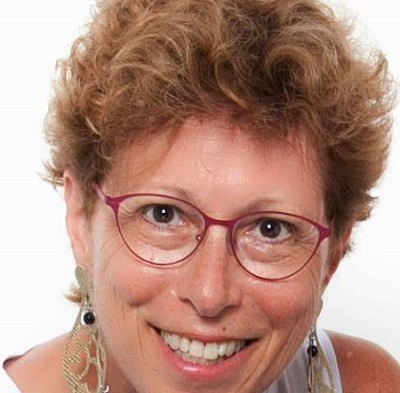
A genetic mutation causing a rare and devastating pediatric neurological disease that has puzzled medical centers around the world has been identified at the Hadassah Medical Organization by Prof. Orly Elpeleg, head of Hadassah’s Department of Genetics and Metabolic Diseases.
Still unnamed, the disease is the result of a mutation in a single gene, which subverts normal cellular protein synthesis through a malfunction of the ribosomal RNA. This RNA is responsible for the translation and production of cell proteins and its malfunction results in an excess of ribosomal RNA, so that the child’s cells are flooded with and poisoned by it. A previously healthy child, between the ages of three and seven, begins to experience a small motor problem. Suddenly, the child experiences rapid motor and cognitive decline. By the time the child is a teenager, he or she usually needs an aide around-the-clock.
Prof. Elpeleg recounts the path to this discovery: “Five years ago, there was a case of a three- year-old girl who was healthy until she suddenly developed a slight limp. She soon lost her ability to speak along with her cognitive abilities. She was seen at a number of medical centers in Israel, but they were stumped. At the same time, Hadassah received our cutting-edge deep- sequencing technology–which our physicians were among the first in the world to use in clinical practice.”
Hadassah has amassed the largest genetic mapping database in Israel, with about 2400 patients. Using the new sequencing technology, Hadassah’s geneticists searched their data base for defects similar to the one found in the girl’s genetic mapping. Hers matched with a nine-year-old boy who had been treated at Hadassah, but now lives in Russia. Hadassah Pediatric Neurologist Dr. Simon Edvardson flew to Russia, examined the boy, and took genetic samples, confirming that the illness was identical to the one suffered by this Israeli girl.
“At this point we realized that we had identified a new disease that didn’t appear in any medical texts or articles,” Prof. Elpeleg says.
Comparing their data in a program called Gene Matcher, the researchers found several more children around the world who shared an identical genetic defect and the same course of disease. To understand the mechanism of the newly identified disease, the researchers collaborated with Dr. George-Lucian Moldovan at Pennsylvania State University College of Medicine. Dr. Moldovan confirmed the disease mechanism: the production of excess RNA, which probably causes brain cells to be flooded and poisoned.
Hadassah and Hebrew University researchers collaborated with a multinational team led by Prof. Elpeleg to identify and study the children from Canada, France, Israel, Russia, and the United States who suffer from the disorder. The researchers found an identical, spontaneously occurring error in the same gene in all the patients tested, representing a difference of one letter among the roughly three billion letters that make up human DNA. By finding the identical change in children who suffer from the identical clinical disease, the researchers determined that the altered gene is indeed the cause of the disease.
“Our study links neuronal degeneration in childhood with altered rDNA chromatin status and rRNA metabolism,” explains Prof. Elpeleg. “It’s the first time that an excess of ribosomal RNA has been linked to a disease in humans.”
“This is a very sad disease,” relates Prof. Elpeleg. “Out of the blue, previously healthy children develop a slight limp, then forget a few words. They go from being children who are acting normally, developing at age level, to children who are severely challenged. Science may not be able yet to repair the gene, but now that our material has been published, it may be possible to identify the mutation early and, with future research, find ways to prevent the terrible deterioration.”
The discovery is highlighted in the August 3, 2017 issue of The American Journal of Human Genetics.
Photo above: Prof. Orly Elpeleg, head of Hadassah’s Department of Genetics and Metabolic Diseases.
See coverage in the Jerusalem Post
